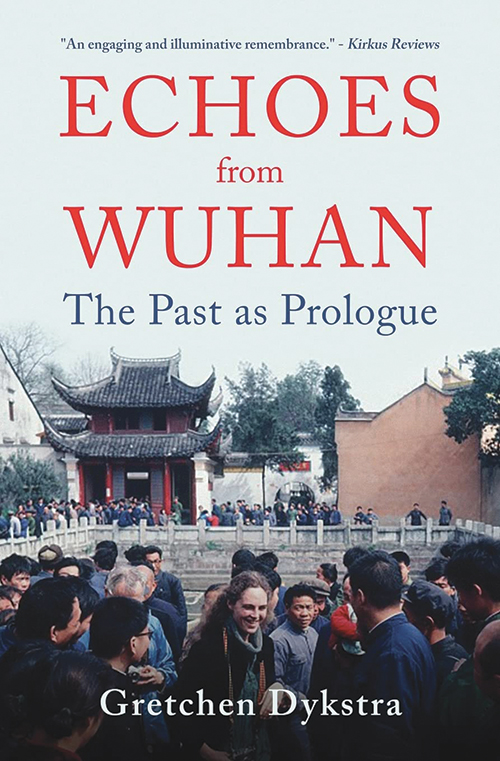
Echoes from Wuhan: The Past as Prologue
Reviewed by Tom Head
June 1, 2023
By Gretchen Dykstra. Atmosphere Press, 2022. 414 pages. $18.95/paperback; $7.99/eBook.
Many of us were not aware of the Chinese city of Wuhan before the pandemic. The novel coronavirus that is thought to have come from bats was first discovered there at the end of 2019, and the city subsequently experienced a lockdown in January 2020 that received global attention. COVID definitely put Wuhan on the map for many of us.
But Wuhan was on Gretchen Dykstra’s map long before the coronavirus. It was more than 40 years ago that she traveled to that large, inland Chinese city and taught English at Wuhan Teachers’ College for two years. China was just opening up to the West after the Cultural Revolution, and 100 people from the United States were invited to come to teach the English language. One hundred seems like a large number, but that many people spread throughout all of China is a very small number in a country that at that time had close to one billion inhabitants. One English teacher for every ten million people is quite a ratio! Overall there were very few outsiders in China then, and Dykstra was one of only seven foreigners in Wuhan at that time.
Echoes from Wuhan is divided into three parts. The first—and by far the longest—details Dykstra’s days teaching at the college from 1979 to 1981. It is full of stories of her work and interactions with students and administrators. In many ways, it reads like a journal, and I would not be surprised to learn that she kept good notes during that challenging journey four decades ago. She also gathered several photographs from the experience that are a helpful addition to the book.
It was a complex journey for Dykstra. The administrators refused to allow her to take classes to learn Chinese, and so most of her experience had to be in English. Both the cultural and political complexities of the time and place presented endless dilemmas. She was privileged in some ways: for example, she was allotted a relatively luxurious four-bedroom apartment with furniture that few others had. However, much information was kept from her, and she was very restricted with regard to where she could venture out and away from campus.
The second part of the book covers the one return trip she took to Wuhan a year after her teaching assignment. And the third part details the stories of several students she kept in touch with over the decades. The book as a whole provides a great deal of insight into the culture of China, especially for the time period immediately after the Cultural Revolution. It also contains lots of interesting human stories, including the author’s own romantic emotions with respect to one of her students.
While Dykstra attended a Quaker elementary school as a young child and managed to get admission and scholarships to a couple Quaker colleges for her Chinese students, there is no overt discussion of Friends or Friends perspectives in the book. Nonetheless, it is a good and fascinating read with many insights into life in China.
Tom Head, a member of Chico (Calif.) Meeting, has moved to California after a 41-year career in Oregon at George Fox University, specializing in international economics; he is now a professor emeritus of economics. He continues to be active in Friends Association for Higher Education, Friends Committee on National Legislation, and Western Friend magazine.



Comments on Friendsjournal.org may be used in the Forum of the print magazine and may be edited for length and clarity.